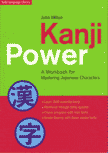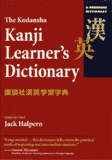I've only really been giving Kaji serious attention for about 3 to 4 months now. Quite a lot of that time has been spent in experimenting to find out the best way to learn kanji (not that I'm sure I've found it yet).
Mostly I've been reading short posts on the forums & comments here, using the Kanji Learners Dictionary to look up the Kanji, rather than using tools such as Rikaichan, as the former forces me to look at the Kanji & count strokes (I'm using the stroke look up method). Looking up by Radical doesn't really work for me yet as I don't know enough of them. Replying to posts in Kanji is also good practice, and I mainly use the Kodansha furigana English-Japanese/Japanese-English dictionaries to find the Kanji for words I already know. This method gives automatically gives practice with the most common Kanji used in idle chat

but does not of course help with handwriting. However the Kodansha Learning Dictionary does have stroke order, so I could add a writing out by hand stage to my forum activities as extra practice. The main difficulty is not being lazy and making too much use of Rikai-chan (which I'm using to help read really long posts, such as the new Audio Blogs).
Books used: Kanji Learners dictionary; Furigana English/Japanese/English dictionaries.
The above is however rather unstructured & really needs to be augmented with a more formal approach to learning Kanji. I haven't really got that in place yet, but the primary issues are deciding on the order to learn the Kanji & how much information to learn about each Kanji on the first pass.
Most books teach Kanji in approximate order of frequency of use. This is ideally suited to classroom work & fits in well with examinations such as JLPT, where the most frequent use Kanji are examined first. These methods concentrate on using Kanji in actual Japanese words. This has several advantages: It helps tie Kanji learning in with general reading/writing, creating the mental links required to actually use the Kanji; It also makes it easier to learn and distinguish between the ON and Kun readings (The Chinese and Japanese pronunciations). The Kun readings are mostly used in words that have a single kanji, in particularly words such as verbs. The ON readings most frequently occur in words that are a compound of multiple Kanji. This still leaves quite a lot of words where it isn't obvious, except by rote learning, but generally is a great help. The main drawback to this technique is that each kanji is learn't to be drawn in isolation (no advantage is explicitly taken that some kanji are built up of others), which really slows the learning process down. This is a major issue, considering how many kanji there are. I have several books that use these techniques, but haven't finalised on one yet. My choice may be dictated by whichever book is favoured by this years classes, as I now have to learn Kanji for the UK GCSE Japanese exam.
Best Options so far: Basic Kanji Book; Kanji Power, ???
(???= A new one that's in the car right now & I'm too lazy to fetch...
Edit: It's '250 Essential Kanji for Everyday Use')
The trouble with the above approach, is that insufficient effort is expended on learning how the various radicals are used to build up the more complex Kanji. This is largely due to learning Kanji in 'frequency of use' order, rather than learning the simpler Kanji first & then learning how these are used to construct the more complex kanji. Thus there is a second approach espoused by Henshall & Heisig, where the main thrust is learning how the more complex kanji are built up out of the simple kanji. In addition, Heisig in particular uses mneumonics to help lock the component parts of each Kanji to it's most common meaning. This method also requires frequent review using paper or electronic flashcards. Electronic has the advantage that automatic re-review of mis-identified cards can be automatically re-scheduled. I strongly suspect that an approach similar to Heisig's is required to learn to distinguish between the 2000 odd general use Kanji in a fairly short time. However the method does not teach how to pronounce the characters, which is a major shortfall. As a result, you are still illiterate after using this method. Heisig attempts to provide a mneumonic method for learning readings in his second book; However I think this approach is mistaken, and that learning the readings for common words is a better approach.
Books: Remembering the Kanji, A Guide to Remembering Japanese Characters
The problem here is that both the above methods teach a key part of what's needed, but because the order of introduction of Kanji is so different, they do not make good bedfellows. A possible approach is to attempt to blitz through Heisig in a few months & then start back at the beginning with the traditional 'kanji in the context of words' approach, which should be easier, as you already will be able to link the meaning of the Kanji to the way it is drawn. However I'm too short on time & undisciplined to have put this into effect. Furthermore I've noticed that the differences in meaning of several kanji are very subtle (meaning-wise) which may make glueing the two sets of learning together more difficult.
I hope this rather long post gives some useful rationale into the kanji learning process & thus clarifies which books teach what. However as a beginner, I cannot really validate what is best (it may differ between people anyway). In particular I have failed so far to reconcile two major different approaches to learning kanji. Personally, for the moment, I am likely to concentrate on learning a limited number of highly frequent kanji in the context of the words that use them. This choice is purely based on the demands of examinations.






